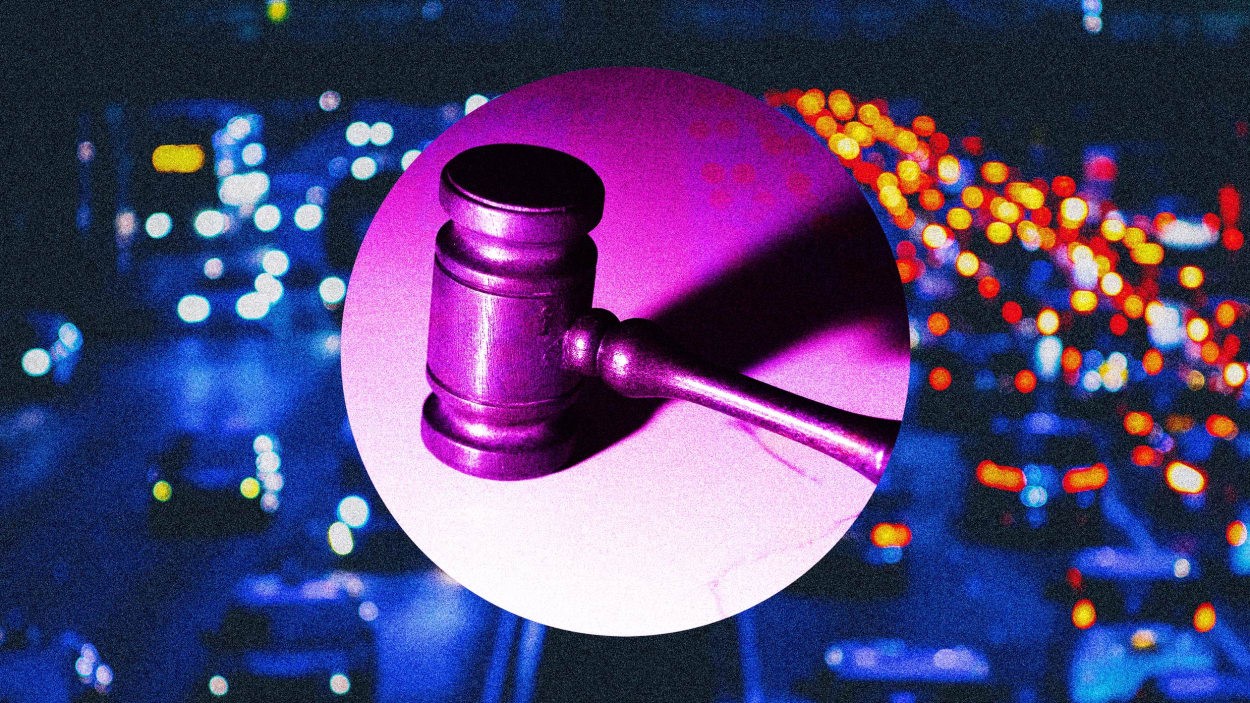Uber and Lyft are playing chicken with lawmakers—and the rideshare giants keep winning
By Wilfred Chan
Earlier this month, the Minneapolis city council passed a bill designed to make Minneapolis Uber drivers’ lives less precarious.
Called Fair Drives Safe Rides, it would’ve created minimum pay rates for app-based rideshare workers and protected them from arbitrary termination. It would’ve also given drivers and passengers receipts spelling out exactly what portion of each fare went to the gig companies—which drivers say can be as much as half.
But as the bill gained momentum, Uber and Lyft issued a threat, the same one they’ve used for years against localities weighing new rules for the gig companies: they would pull out if it succeeded.
Fair Drives would “nearly double our operating expenses,” Lyft claimed in a letter to the city council, without providing evidence. “The math simply doesn’t make sense, and it would force us to shut down operations in the city.”
Then, a few days after city council passed the bill, Mayor Jacob Frey, a Democrat, issued a stunning veto. “We didn’t have all the data and information that we needed to understand the consequences of the decision we’re making,” he told local press. “What I’m proposing is: let’s do our homework, let’s do this right.”
Councilmember Robin Wonsley, one the bill’s authors, says the mayor hadn’t voiced any concerns until the night before the actual vote. “I was very angry and surprised that the mayor took it upon himself to strike up a deal with Uber and decided to basically dismiss eight months of very intentional, hard labor that his staff, our offices, and subject matter experts from other cities poured into creating a very strong, evidence-backed policy,” she says, adding that his explanations for the veto “almost copied verbatim the talking points that Uber and Lyft raised.”
What happened in Minneapolis follows an increasingly familiar pattern, where lawmakers quash rideshare regulations after Uber and Lyft’s warnings. This past May, Minnesota’s Democratic governor Tim Walz issued a veto against a bill similar to Fair Drives Safe Rides when the gig companies threatened they would pull out. And the gig companies have made similar ultimatums in cities and states across the country, before watering down or stopping new regulations in their tracks.
But why don’t localities stand their ground, and what would actually happen if Uber and Lyft pulled out?
When a city lets Uber leave
To answer that question, look to Austin, Texas. In 2015, the gig companies said they would leave Austin if a law was passed requiring rideshare drivers to undergo background checks with fingerprinting (already a requirement for taxi drivers in the city). The law passed that December—and in May 2016, after spending millions in an unsuccessful attempt to overturn it with a ballot proposition, the gig companies left.
Almost immediately, Austinites created alternatives. The city’s taxi drivers union formed a worker coop and launched their own service, ATX Coop Taxi. Local entrepreneurs also launched RideAustin, a non-profit rideshare app. Andy Tryba, RideAustin’s co-founder, says they started coding the app as soon as Uber and Lyft shut down—“basically staying up every night for four weeks. And then we grew like crazy.”
Despite RideAustin’s early growing pains—the service grew less reliable outside of downtown Austin, and a server crashed on at least one occasion due to high demand—the app had in just one year completed more than one million rides and reached nearly half of the city’s market share, according to Tryba. Then Uber and Lyft came back.
The companies had gone directly to Texas’ Republican governor Greg Abbott, whom they convinced to outlaw Austin’s rideshare regulations. They restarted in Austin in May 2017, the same day Abbott signed the bill, and RideAustin’s market share plummeted. In 2020, amid the pandemic, Tryba decided to shutter the service indefinitely.
Tryba says he’s proud that the community “banded together to make things happen” without Uber—and says the experience proved that no city is truly beholden to the rideshare giants. “Really, [Uber and Lyft’s] main moat today is the fact that they’re on everyone’s phones. But there’s tons of innovation that’s possible,” he says. In 2019, RideAustin made all of its code open source, which Tryba hopes can inspire other alternative rideshare efforts around the world.
Why policymakers feel ‘stuck’
It’s clear many policymakers aren’t ready to take that leap. Wonsley, the Minneapolis councilmember, says in the run-up to the vote, city officials circulated the Austin case study to show that “other cities have been able to figure it out. There was once a world where Uber did not exist, not too long ago, and there will be a way in which this service will be provided.” But the rideshare lobbyists spent “a lot of time with Mayor Frey,” which “intensified in the days coming up to the vote,” she says. “And Mayor Frey decided to fall for it.” (Frey’s office did not respond to a request for comment.)
Katie Wells, a Georgetown postdoctoral geographer and co-author of Disrupting D.C: The Rise of Uber and the Fall of the City, says that “a lot of these policymakers that make this compromise feel stuck between a rock and a hard place” because of their localities’ disinvestment in the kind of public infrastructure that gig companies have replaced. But the other problem is that policymakers simply don’t have enough data.
“The reality is, does the mayor of Minneapolis really have data about how important the operation of these entities are to the city? Probably not. Most cities don’t,” Wells says. “And I think that’s really important to note in these arguments and conversations, is that a lot of policymakers just aren’t sure what’s happening.”
The now-vetoed bill would’ve required the companies to share that data with the city. “They’re saying they’re paying minimum wages, they’re saying they’re paying above $15. And we’re like, on what basis?” says Wonsley. (Uber and Lyft did not respond to a request to share data to back their claims.)
That we still don’t know the answers, more than a decade into their operations, “tells you a lot about how these companies operate behind a veil,” says Wells. “And that’s part of their power. As long as you’re behind the curtain, you can look as big and wonderful as anything.”
(7)



